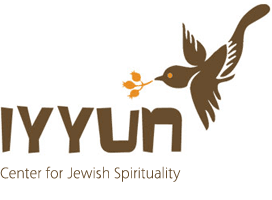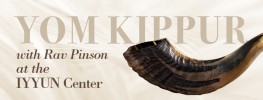Days of Counting
The intermediary time period between Passover and Shavuot, when there is a mitzvah to count the Omer, is marked by sadness and mourning. Before we explore the reason for the sadness let’s first read the Torah’s description of this mitzvah. In the Torah it is written “You shall count for yourselves the next day after the Shabbos, (ie; the first day of Passover) from the day that you bring the Omer of waving, seven Shabbos they shall be complete; To the next day after the seventh Shabbos you shall count, (until) fifty days” (Leviticus. 23: 15-16.). These seven weeks/ forty nine days are referred to as the days of sefira/counting, as we count the days from the Omer, day one, day two, until we count the forty-ninth day and reach day fifty.
While the Torah itself does not offer a rationale for the counting, the Midrash does. The Midrash relays that when the Jews left Egypt they knew that eventually they were going to receive the Torah and so they counted the days until that event in great anticipation.
We too, having achieved liberation from our own personal Egypt, unbridled from a place of constriction and limitations, count the days leading up to a time when we will once again receive the Torah on Shavuot.
Passover is the time of liberation, but it’s only on Shavuot that we are given the tools to reach the destination.
Kabbalistically, the forty-nine intermediate days are not seen merely as an immaterial space that bridges Passover with Shavuot. The journey through time becomes a count-down in anticipation of Shavuot. The counting itself is seen as integral to the process of moving from liberation to revelation. Each day is an end unto itself, one that is worthy and important, it really counts.
7 Cycles of 7
The truth is that one cannot reach the ‘fiftieth gate’ without first climbing the previous forty-nine.
The forty-nine days represent forty-nine steps of personal development. There are seven primary emotional sefirot according to Kabbalistic teachings. They are:
- chesed/giving
- gevurah/ restraint
- tiferes/harmony
- netzach/ambition
- hod/devotion
- yesod/connection
- malchus/receptiveness.
Each of these emotions or attributes on their own, unbalanced and without a healthy dose mixed in from the others, creates a condition of tohu – confusion, chaos, and disruption of order and harmony. To establish a situation of tikkun- correction and perfection- there needs to be a blending of the attributes so that each one of the seven contains all the other, thus the sum total of forty-nine.
Balancing the Attributes
Let us take the first attribute, chesed/giving, and imagine it without a measure of gevurah/restraint:
As you walk along the street you notice a child playing around with a knife. If you were to practice chesed/giving without gevurah/restraint you would activate ‘kindness’ and “acceptance” and continue to allow the child to play with the knife. But of course you are not being kind; you are being foolish and perhaps even selfish; not wanting to be the ‘bad guy’ who takes away the toy. Your being ‘nice,’ allowing the child to play with the knife, is not kindness; rather the contrary. Kind would be to show gevurah and take away the knife and give the child another toy.
To live productively and liberated we need to cultivate a state of harmony and synergy between the often oppositional attributes within. To be liberated, from the Greek word libra, is to be properly balanced. Indeed, to bring tikkun to an otherwise chaotic universe of tohu, we need to established interdependency and allow for a melding of our inner forces.
In Chassidic terminology, the bringing together and synthesizing of the emotional sefirot is achieved via Hamshacas Mochin Be‘Midos- “the drawing down of intelligence into emotions.” As opposed to overreacting, or simply allowing one emotion to take hold over us, which occasionally is indeed the correct way to respond, we bring a measure of mochin- intelligence and level-headedness- into the picture. Each day of the Counting of the Omer we consciously and ceatively work on another aspect of our emotional reality inspiring a tikkun of the midos so that they begin to operate as one unifying force and can be rendered as individual and integrated parts of one great symphony. Chesed is interlaced with gevurah, and gevurah entertains a healthy dose of chesed, all together as a single organism with one unified trajectory.
Why so Sad?
Clearly in a time of introspection and self-evaluation there ought to be a level of seriousness and sincerity but why sadness and mourning?
The Talmud recounts that some eighteen hundred years ago in the period between Passover and Shavuot, 24,000 of Rabbi Akiva’s students died from a mysterious plague. They died as “they did not act respectfully towards each other.” And this is the reason for the grief.
This seems like a straightforward explanation. The trouble and the oddity of this story is that these were students of Rabbi Akiva. Rabbi Akiva is the one who proclaimed “Love your fellow man as yourself, this is a great principle of Torah.” So the question becomes how can his students suffer from such a malady, to the extent of being the source of their own demise? If they ignored or even despised his most essential teaching, as he says, ‘this is a great principle of Torah,’ how can they be referred to as his students?
Respect Offering
As explored, to operate from a condition of chesed, a desire to give without lacing it with a dosage of gevurah/restraint can be destructive, and this is what these students suffered from. Of course they ‘loved’ each other, and did so very dearly. The trouble was that they wanted to give and give without gevurah; without taking into consideration whether or not the receiver is open to receive.
Their disrespect was not because they lacked love for each other, rather the opposite is true. Loving one another so deeply they wished to share all their dreams, ideas and ambitions with the others, and most crucially, believing that what they had was most beautiful. Out of love they desired that their companions should have the same. So each one of them would go around offering the others what they deemed was most valued. They wanted to give and give more, and they did not take notice that perhaps the others have their own dreams, beliefs and aspirations. They practiced chesed/giving without gevurah/restraint; a giving without borders or boundaries, essentially, a giving without respect.
Parents are prime examples of those who wish to give and offer all they have to their children. The risk of such giving is that in the process they may overwhelm or stifle the child’s individuality. Properly giving is giving with respect to the receiver, and that sometimes demands that one practices restraint.
A Stone of Light
While aspiring to achieve balance and integration within our own emotional state by counting, measuring and taking into account our midos we recall what could occur when there is imbalance. The counting, in Hebrew referred to as sefira, of the forty-nine combinations, corrects and causes a tikkun to the sefirot so that the sefirot become sapir, as in the English derived term sapphire, which refers to light, a stone of light. The emotional sefirot become illuminating and guiding, and we are now ready once again to receive the Torah.








